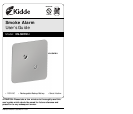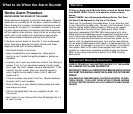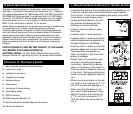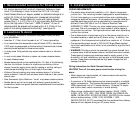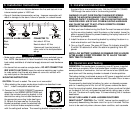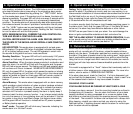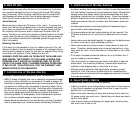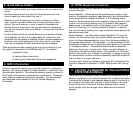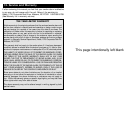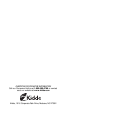
• Determine a place outside your home where you all can meet if a fire
occurs.
• Familiarize everyone with the sound of the smoke alarm and train
them to leave your home when they hear it.
• Practice a fire drill at least every six months, including fire drills at
night. Ensure that small children hear the alarm and wake when it
sounds. They must wake up in order to execute the escape plan.
Practice allows all occupants to test your plan before an emergency.
You may not be able to reach your children. It is important they know
what to do.
• Current studies have shown smoke alarms may not awaken all sleep-
ing individuals, and that it is the responsibility of individuals in the
household that are capable of assisting others to provide assistance to
those who may not be awakened by the alarm sound, or to those
who may be incapable of safely evacuating the area unassisted.
There are situations where a smoke alarm may not be effective to pro-
tect against fire as stated in the NFPA Standard 72. For instance:
a) smoking in bed
b) leaving children home alone
c) cleaning with flammable liquids, such as gasoline
Ionization type smoke alarms use a very small amount of a radioactive
element in the sensing chamber to enable detection of visible and invisi-
ble combustion products. The radioactive element is safely contained in
the chamber and requires no adjustments or maintenance. This smoke
alarm meets or exceeds all government standards. It is manufactured
and distributed under license from the U.S. Nuclear Regulatory
Commission.
9. NRC Information
10. NFPA Required Protection8. Good Safety Habits
The National Fire Protection Association’s Standard 72 provides the fol-
lowing information:
Smoke Detection – Where required by applicable laws, codes, or stan-
dards for the specified occupancy, approved single- and multiple-station
smoke alarms shall be installed as follows: (1) In all sleeping rooms
Exception: Smoke alarms shall not be required in sleeping rooms in exist-
ing one- and two-family dwelling units. (2) Outside of each separate
sleeping area, in immediate vicinity of the sleeping rooms. (3) On each
level of the dwelling unit, including basements Exception: In existing
one- and two-family dwelling units, approved smoke alarms powered by
batteries are permitted.
Smoke Detection – Are More Smoke Alarms Desirable? The required
number of smoke alarms might not provide reliable early warning pro-
tection for those areas separated by a door from the areas protected by
the required smoke alarms. For this reason, it is recommended that the
householder consider the use of additional smoke alarms for those areas
for increased protection. The additional areas include the basement,
bedrooms, dining room, furnace room, utility room, and hallways not
protected by the required smoke alarms. The installation of the smoke
alarms in the kitchen, attic (finished or unfinished), or garage is normally
not recommended, as these locations occasionally experience conditions
that can result in improper operation.
This equipment should be installed in accordance with the National Fire
Protection Association’s Standard 72 (NFPA, Batterymarch Park, Quincy,
MA
“Early warning fire detection is best achieved by the installation of fire
detection equipment in all rooms and areas of the household as follows.
A smoke alarm installed in each separate sleeping area (in the vicinity of,
but outside of the bedrooms), and heat or smoke alarms in the living
rooms, dining rooms, bedrooms, kitchens, hallways, attics, furnace
rooms, closets, utility and storage rooms, basements and attached
garages.”
11. CAUTION (AS REQUIRED BY THE CALIFORNIA
STATE FIRE MARSHAL)



